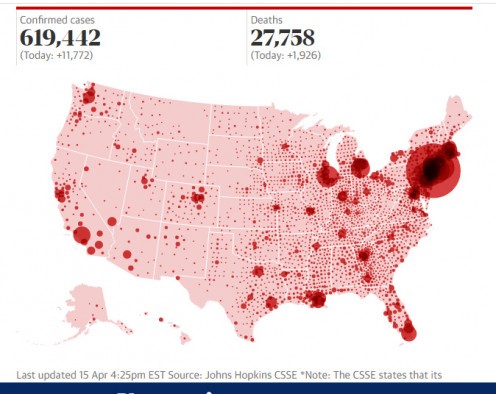Tarred With the Same Brush

The phrase appears to have it routes in olden times when shepherds branded their flock with a marking applied with a brush and probably because it was impossible to clean the brush effectively, they just repeated the process until the whole flock was marked. The nature of the beast with sheep is other methods of branding just don’t work well with the way the sheep’s wool would just grow back over it hiding the brand from plain sight. Since the sheep in a shepherd’s flock are pretty much all one and the same to him, grouping together with one marking makes for a simple way to include them in that group.
Today the phrase is used more often in assigning people to a similar group whether that is considered reasonable or not. It implies that it easier to “tar them all with the same brush” and thereby include them into one group than consider each member of that group individually for various reasons.
One definition I found on the Internet is “To unfairly categorize someone or something as being the same as another person or thing”, To me this is the definition that I find the most annoying, as a management style, where the person or people in charge decide it is easier to tar everyone with the same brush rather than get into the real reason why one or more of that group is not performing in the manner they expect.
An example I had in my real life working environment was where the head office personnel in charge of the national sales team decided to tar everyone with the same brush by setting a quota of 8 sales calls per day. Apparently someone or a group of salespeople were not giving them enough face contacts with customers, in their opinion. On the surface, it seems not unreasonable but it does not take into account regional differences and outlet density in various locations. Back in that time, stores that sold paint were on about every 3rd block in a major city (such as where head office was located) in the form of hardware, department, paint and wallpaper, building centres and even general stores. But in other parts of the country you might only find one store like those in a 50-100 mile radius. So over time, the quota just disappeared along with the need to send in detailed sales call reports which any good sales person knew how to write. Creative writing is something I excelled at in my time as a sales rep and I even had one boss (a good one) envious of my ability to express myself on paper. It took me a long time to actually recognize that talent. I actually had two bosses at the time (prior to the Internet), one in a regional office and one in head office (the former was a 1 ½ hour flight and the latter was 4 hours) so that ability proved useful in explaining what was going on business-wise in the sales region I covered which included 3 provinces eventually.
The point here is tarring the entire sales force with the same brush is not an effective way to manage their time since each potentially has a unique configuration of geography, locations and sales contacts.
Using the previous logic, it makes me wonder how the world is handling the current coronavirus attack with the approach of tarring everyone with the same brush. This is certainly not entirely true but how can the New York City area fall under the same guidelines as Boise, Idaho or Toronto, Ontario the same as Fort St. John, British Columbia. The confusion this has created is almost an epidemic unto itself. And if you extend this thinking unto other continents it gets even more confusing. The map above which relates the onset of the coronavirus in the USA shows differing degrees of impact.
Inconsistencies just seem to bring out even more confusion and questions. Some examples follow here.
As of April 15, 2020, the combination of China, India and Japan (about 3 billion people live there) have only reported less than 5,000 deaths to date according to the website Worldometer. All of the USA (about 331 million people) has reported 28K deaths with as much as 11K in New York City (8.4 million people in 2018) alone.
In Canada (about 38 million people), just over 1K deaths have been reported with almost half of them occurring in institutional senior-care locations often called nursing homes.
Cruise ships were targeted early on when monitoring the spread of the virus, so ultimately any large grouping soon became a target for tarring them all with the same brush. Ultimately, the concept of social distancing was invoked almost globally (6 feet or 2 metres spacing between people outside their homes). If there were no buildings, trees, roads, rivers or other obstructions you could theoretically space 250,000 people that way in a square kilometre. New York City is about 780 square kilometres so that is significantly smaller than the 141,000 square kilometres in the entire state. The point here is there are unique conditions in play that need to be addressed to better understand why numbers are the way they are there but not limited to those. There is discussion going on as to how a death gets reported in many locations throughout the world so the truth is hidden amongst many conspiracy theories.
The final point here is that situations throughout the world vary dramatically regarding what is transpiring regarding the outbreak of the coronavirus. Tarring the whole world with the same brush may prove to be effective in the short term in how to handle the outbreak of the coronavirus but time will tell as to the effectiveness of approaches that do not take this simplistic approach. Things like the use of various drugs to fight the virus, differences in population density, varying social distancing compliance, the effectiveness of different approaches to protective gear in public and the approach to a back to normal way of life will all contribute to an ever bigger debate as to what worked and what did not. It also supports the idea that a single body governing the health of the entire planet has not proven to be a very good way to deal with potential global health problems.
I’m not saying we all just go back to how it was in 2019 in a big rush but learn from each step we take that leads to the recovery of people tested positive for the virus, and ultimately the return to a state of normalcy. Certainly sooner would be better than much later but there should be more than one switch per country that gets turned back on one at a time and that depends on using common-sense and logic in a controlled and safe manner. The same is true globally and provides the potential for more learning as each approach is monitored for effectiveness. Taking small forward steps appears to be much better than hiding in our homes and hoping that it gets better. Meanwhile stay safe and be kind to each other. There isn’t much to be gained by speculating what might be. There is more to be gained by doing positive things right now that takes us forward.



